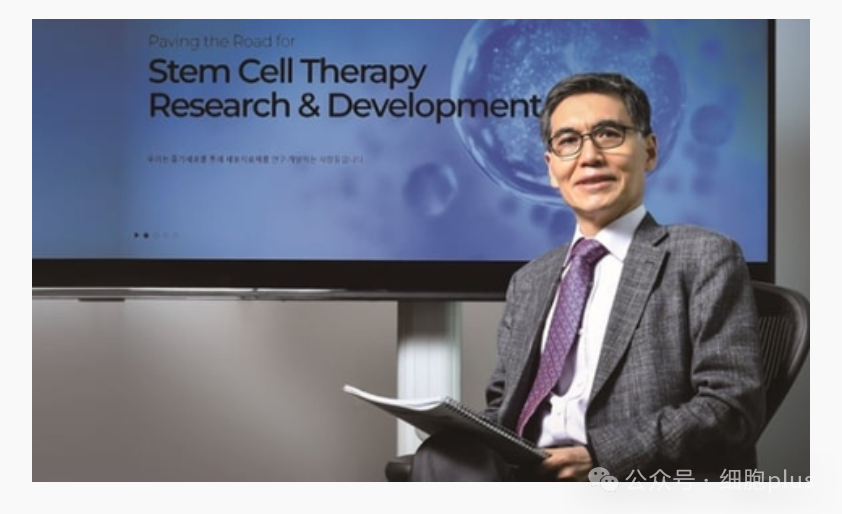
TED-A9 is a high-purity midbrain dopaminergic progenitor cell extracted from human embryonic stem cells (hESC) under strict GMP conditions
In February 2024, in the Phase 1/IIa clinical trial, 12 participants were transplanted using investigational cell therapy using TED-A9
Three low-dose participants (first low-dose cohort) had no major safety concerns for one year
Three low-dose participants (first low-dose cohort) showed clinical improvement in cell survival and implantation after 12 months

Dong-Wook Kim, Professor, Yonsei University School of Medicine and Chief Technology Officer of S.BIOMEDICS (Photo: S.BIOMEDICS)
South Korea's S.BIOMEDICS announced that the one-year evaluation data of the first three participants (the first low-dose cohort) in the Phase 1/IIa clinical trial using TED-A9 (human embryonic stem cell)-derived midbrain dopaminergic progenitor cells were positive. The data showed that during a one-year follow-up, three participants demonstrated the safety and effectiveness of TED-A9.
The clinical trial was conducted at Yonsei University Severance Hospital in South Korea and was led by neurosurgeon Professor Jin-Woo Chang and neuroscientist Professor Phil Hyu Lee.
For the three participants who received the initial low dose (3.15 million cells), MRI and CT scans one year later showed no adverse reactions related to cell transplantation or surgery.
In addition, the MDS-UPDRS Part III assessment, which objectively measures motor function, showed an average decrease of 12.7 points from 61.7 points at baseline to 49.0 points one year after treatment. The MDS-UPDRS Part III assessment showed significant improvement in their exercise ability. Improvements in symptoms such as gait wear and freezing were also observed.
DAT brain imaging (FP-CIT-PET) performed one year after transplantation showed an increase in dopamine transporter (DAT), indicating potential implantation of dopamine neurons, which is associated with improvement in the patient's Parkinson's symptoms.
"Although this clinical evaluation only looked at the first three low-dose patients and not all 12 subjects, no adverse issues related to transplant surgery or cell safety were observed within one year after transplantation. Importantly, the clinical results show very promising efficacy,"said Professor Dong-Wook Kim of Yonsei University School of Medicine. "These results are believed to be closely related to the results of our preclinical in vitro and in vivo studies. We are pleased that TED-A9 can become a basic treatment that directly replaces lost dopaminergic neurons in patients with Parkinson's disease.
After a year of follow-up, assessment data for more participants (the first high-dose cohort) will be released in September or October 2024.
About TED-A9 and Phase 1/IIa clinical trials
TED-A9 is an investigational cell therapy designed to replace lost ventral midbrain specific dopaminergic cells in patients with Parkinson's disease. These ventral midbrain specific dopaminergic cells use only small molecules derived from hESC. TED-A9 represents a major advance in this field, providing highly pure dopamine cells derived from hESCs. These hESC-derived dopaminergic progenitor (precursor) cells (TED-A9) were surgically transplanted into three segments of the putamen; the anterior, middle and posterior segments, each with three orbits. Bilateral putamina received cell transplants during a surgical procedure, injecting cells at three points within each track. After transplantation, it is expected that the transplanted dopaminergic progenitor cells will mature into dopaminergic neurons, which will provide dopamine that patients with Parkinson's disease lack, thereby restoring the patient's motor function.
The Phase 1/IIa clinical trial was conducted on 12 participants who had been diagnosed with Parkinson's disease for more than 5 years and showed motor complications such as wear and tear, gait freezes, or dyskinesia. The subjects were between 50 and 75 years old. TED-A9 was administered to six participants in the low-dose group (3.15 million cells) and another six participants in the high-dose group (6.3 million cells).
An initial cohort of three patients was recruited at the low dose for up to 3 months post-transplant to assess initial safety, including dose-limiting toxicity (DLT) assessments. There were no security issues during this time frame. Therefore, three additional patients were enrolled at the high dose for evaluation within 3 months after transplantation. Since no safety issues arose during this extension period, the clinical trial continued, adding three patients to each of the low and high dose groups, for a total of 12 patients. The last participant accepted TED-A9 management in February 2024.
The primary objective of the Phase 1/IIa trial was to assess the safety and exploratory effectiveness of TED-A9 transplantation within two years after transplantation. Safety will be monitored for another 3 years, for a total of 5 years.
About S. BIOMEDICICS
Founded in 2005, S.BIOMEDICS is at the forefront of stem cell therapy, focusing on data-driven biology-driven regenerative medicine. Based on two core platform technologies, S.BIOMEDICS currently has developed seven cell therapy projects for incurable diseases. Its leading projects are in the clinical stage, accelerating the development of cell medicine, as follows:
TED-A9: ventral midbrain specific dopaminergic progenitor cells from hESC in Parkinson's disease (stage 1/2a)
TED-N: PSA-NCAM positive neural progenitor cells derived from hESC treatment of spinal cord injury (stage 1/2a)
FECS-AD: 3D MSC spheres for severe limb ischemia (stage 1/2a)